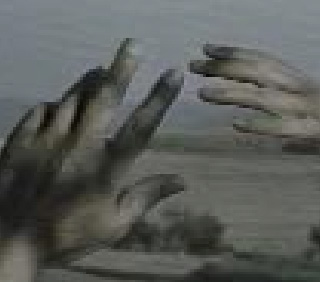Splash art originated in the 1940s in comics, where the term referred to a full page of visuals at the front of a book. Pages were designed to engage the reader's imagination along the lines of the comic's broader concept, while standing independent from the narrative. In the late 1990s, when the widespread use of the application Flash opened up new possibilities for animation and interactive media, the idea of the splash page migrated to web design. Online splash art brought visual excitement to a webpage when low modem speeds made it impractical to post large or moving images amid a site's textual content.
Rhizome introduced splash pages to its web site in 1998 in order to display artwork with greater immediacy....
Rhizome introduced splash pages to its web site in 1998 in order to display artwork with greater immediacy....
Launch Project 
 Touch and Contact, 2000
Touch and Contact, 2000
About
In Touch and Contact, Gregory Chatonsky defines the splash page as a site that both articulates the distance between the user and his
destination and eliminates it. A looped animation of two hands touching introduces physical contact as a metaphor for an online connection,
reminding the user that communication is a fundamentally human act. But the exaggerated pixelation of the image, the option of altering
its scale by clicking and dragging, a robotic voiceover, and the black background all reinforce the artifice of the technological medium.
Gregory Chatonsky is a philosopher and artist from Paris who founded the pioneering internet-art collective incident.net in 1994.
http://incident.net/users/gregory/wordpress/
http://incident.net/users/gregory/wordpress/